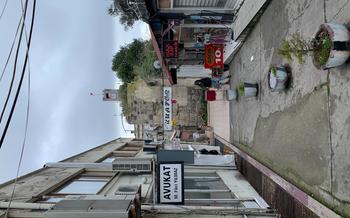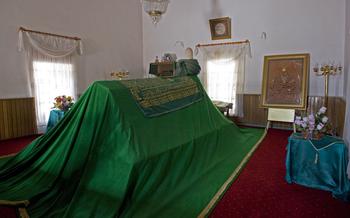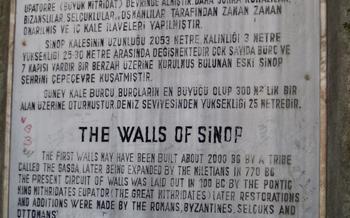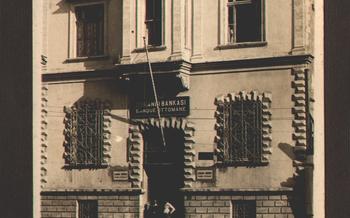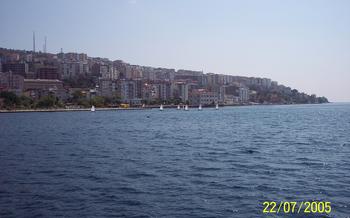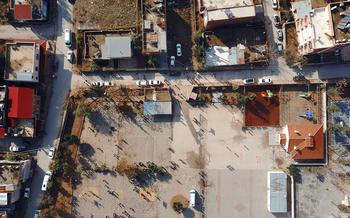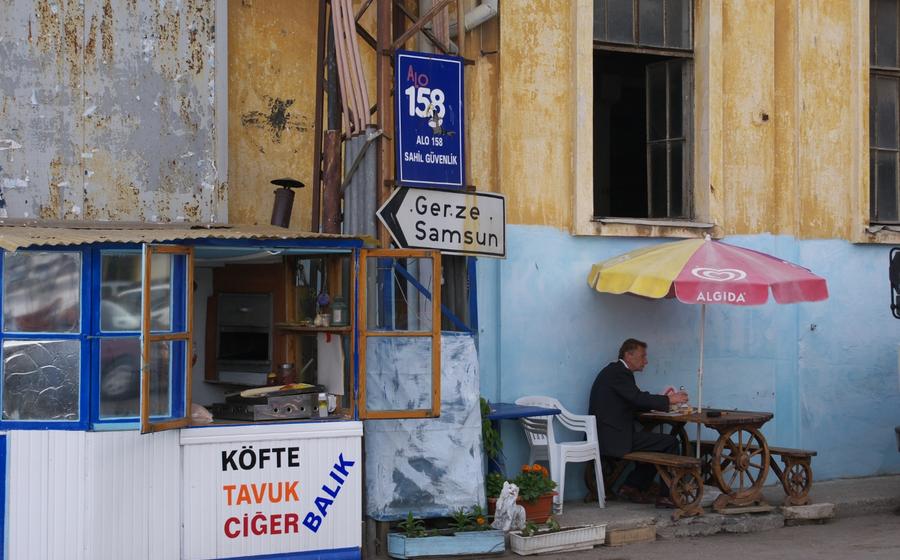
Sari Saltuk Tomb
- Historical Significance:
- Location and Accessibility
- Pilgrimage and Religious Significance
- Architectural Features
- Tomb Complex
- Sari Saltuk Museum:
- Cultural Importance:
- Local Traditions and Customs
- Legends and Folklore
- Restoration and Preservation
- Visitor Etiquette:
- Photography and Videography
- Nearby Attractions:
- Local Cuisine:
- Insider Tip:
Historical Significance:
The Sari Saltuk Tomb in Sinop, Turkey, holds immense historical and spiritual significance. It is believed to be the resting place of Sari Saltuk, a revered Sufi saint who played a crucial role in spreading Islam in Anatolia during the Seljuk period. The tomb has become a pilgrimage site for Muslims from around the world, who come to pay their respects and seek blessings. The architectural features of the tomb, with its intricate carvings and unique design, reflect the artistic and cultural heritage of the Seljuk era. Exploring the Sari Saltuk Tomb offers a glimpse into the rich history, religious beliefs, and cultural traditions of Turkey.
Location and Accessibility
The Sari Saltuk Tomb stands proudly in the heart of Sinop, a picturesque city on the Black Sea coast. To reach this revered site, visitors can embark on a scenic journey through the city's vibrant streets. Public transportation options, including buses and taxis, provide convenient access to the tomb, making it easily accessible for pilgrims and tourists alike.
Nestled amidst a tranquil neighborhood, the tomb is just a short walk from the city center. Visitors can stroll along the charming streets, admiring the local architecture and soaking in the lively atmosphere. Along the way, they will encounter various landmarks and attractions, such as the Sinop Castle and the Ethnography Museum, which offer glimpses into the city's rich history and culture.
To fully immerse in the local experience, visitors can opt to explore the area on foot. The walk to the tomb is a pleasant and rewarding journey, allowing travelers to discover hidden gems and interact with the friendly locals. Whether arriving by public transport or on foot, the Sari Saltuk Tomb awaits visitors with its spiritual ambiance and historical allure.
Pilgrimage and Religious Significance
The Sari Saltuk Tomb holds immense religious significance for Muslims worldwide, serving as a revered pilgrimage site. Devotees from far and wide flock to the tomb to pay homage to Sari Saltuk, a revered figure in Islamic history. The tomb is believed to possess miraculous powers, and many pilgrims visit seeking blessings, healing, and guidance.
Visitors are often moved by the spiritual atmosphere that permeates the tomb complex. Upon entering the tomb, a sense of serenity and reverence envelops the heart. The walls are adorned with intricate verses from the Quran, adding to the sacred aura of the place. Pilgrims often engage in prayers and supplications, seeking divine intervention and spiritual solace.
One of the most common rituals associated with visiting the tomb is tying a piece of cloth or a handkerchief to the surrounding railings or trees. This act symbolizes a personal connection with Sari Saltuk and a plea for his intercession. The knotted cloths flutter in the breeze, creating a colorful spectacle that represents the collective hopes and prayers of countless pilgrims.
Stories abound of miraculous occurrences and answered prayers at the tomb. Devotees share tales of healing from illnesses, resolution of personal problems, and fulfillment of long-held desires. These stories further enhance the tomb's reputation as a place of spiritual power and divine grace.
Architectural Features
The Sari Saltuk Tomb stands as a remarkable example of Seljuk architecture, showcasing intricate craftsmanship and unique design elements. Its octagonal shape, a distinctive feature, symbolizes the number eight, considered auspicious in Islamic numerology. The exterior is adorned with exquisite carvings and inscriptions in Arabic, narrating verses from the Quran and recounting the life and teachings of Sari Saltuk.
Inside the tomb, visitors are greeted by an awe-inspiring dome adorned with vibrant frescoes and geometric patterns. The walls are adorned with colorful tiles, each tile meticulously arranged to create intricate designs and patterns that tell stories from Islamic history and mythology. The tomb's interior exudes a serene and spiritual atmosphere, inviting visitors to contemplate and reflect upon the life and legacy of Sari Saltuk.
The tomb's octagonal shape is further emphasized by eight windows, each positioned to allow natural light to flood the interior, creating a luminous and ethereal ambiance. These windows also serve as a reminder of the eight gates of Paradise, symbolizing the spiritual journey that Sari Saltuk undertook during his lifetime.
Overall, the Sari Saltuk Tomb's architecture is a testament to the skill and artistry of the Seljuk builders. Its unique features, from the octagonal shape to the intricate carvings and frescoes, contribute to its significance as a historical and cultural landmark, attracting visitors from around the world.
Tomb Complex
The Sari Saltuk Tomb is not just a standalone structure; it is part of a larger complex that includes a mosque, a dervish lodge, a caravanserai, and a cemetery. The mosque, built in the 13th century, features intricate Seljuk-style architecture with a central dome and minaret. It serves as a place of worship for pilgrims and local residents alike. The dervish lodge, once home to wandering Sufi mystics, offers a glimpse into the spiritual practices of the past. The caravanserai, with its vaulted chambers and stables, provided shelter for travelers and merchants along the ancient trade routes. The cemetery, located adjacent to the tomb, contains the graves of Sari Saltuk's disciples and followers, adding to the sacredness of the site. These structures, together with the tomb, form a harmonious ensemble that showcases the rich cultural and architectural heritage of the region.
Sari Saltuk Museum:
Within the complex, visitors can delve deeper into the life and legacy of Sari Saltuk at the Sari Saltuk Museum. Dedicated to preserving and promoting the region's history and culture, this museum houses a collection of artifacts, manuscripts, and exhibits that shed light on the revered saint.
Through interactive displays, visitors can learn about Sari Saltuk's teachings, his role in spreading Islam, and the miracles attributed to him. The museum also showcases traditional Turkish handicrafts, textiles, and artwork inspired by the saint's life, offering a glimpse into the region's rich cultural heritage.
A visit to the Sari Saltuk Museum is an opportunity to gain a deeper understanding of the saint's profound influence on the region and his enduring legacy as a symbol of faith, unity, and cultural identity.
Cultural Importance:
The Sari Saltuk Tomb holds immense cultural significance as a symbol of Turkish identity and heritage. It represents the deep-rooted spiritual and cultural traditions of the Anatolian region. The tomb has become a beacon of unity and pride for the local community, fostering a sense of belonging and shared history.
Legends and folklore surrounding the tomb have played a pivotal role in shaping local culture. Stories of Sari Saltuk's miracles and teachings have been passed down through generations, becoming an integral part of the region's oral tradition. Festivals and events held at the tomb celebrate Turkish customs and traditions, attracting pilgrims and visitors from far and wide.
The tomb's cultural importance extends beyond its religious significance. It serves as a reminder of the region's rich history and diverse cultural influences. Visitors can immerse themselves in the local traditions and customs, gaining a deeper understanding of Turkish culture and its unique characteristics.
Local Traditions and Customs
The Sari Saltuk Tomb is deeply embedded in the local traditions and customs of Sinop. One unique tradition is the annual "Sari Saltuk Festival," held during the summer months to celebrate the life and legacy of Sari Saltuk. The festival features traditional music and dance performances, storytelling sessions, and reenactments of legends associated with the tomb. Visitors can immerse themselves in Turkish culture by participating in these festivities and learning about the deep reverence for Sari Saltuk among the local community.
Another significant custom is the practice of "ziyaret," where people visit the tomb to pay their respects and seek blessings. Visitors often leave offerings of flowers, coins, or cloth at the tomb as a sign of devotion. It is customary to remove one's shoes before entering the tomb as a gesture of respect. These traditions reflect the spiritual significance of the tomb and the deep connection between the local community and Sari Saltuk's legacy.
Legends and Folklore
Legends and folklore have woven a rich tapestry around the Sari Saltuk Tomb, adding to its mystique and allure. One popular tale narrates the story of Sari Saltuk's miraculous arrival in Sinop. Legend has it that he rode on a mythical horse named Kizil Elma (Red Apple), which carried him across the Black Sea, leaving behind a trail of sparks that illuminated the night sky. As the horse galloped, its hooves struck the ground, creating natural springs that brought forth fresh water to the land.
Another legend speaks of Sari Saltuk's encounter with a dragon that terrorized the region. With his unwavering faith and divine powers, Sari Saltuk defeated the dragon, bringing peace and tranquility to the people. The dragon's lair is said to be located near the tomb, and locals believe that its bones still lie beneath the earth.
These legends have been passed down through generations, shaping the cultural identity of Sinop and adding to the allure of the Sari Saltuk Tomb. Visitors are captivated by these stories, which bring the tomb's history and significance to life, creating a lasting connection to the region's rich heritage.
Restoration and Preservation
The Sari Saltuk Tomb has undergone several restoration and preservation efforts throughout history. In the 19th century, the Ottoman authorities carried out extensive repairs to maintain the tomb's structural integrity. In recent years, the Turkish government has allocated significant funds for the restoration and preservation of the site. These efforts have involved repairing the tomb's exterior, restoring its intricate carvings, and strengthening its foundations.
One of the main challenges faced during the restoration process was the need to balance preservation with modernization. The goal was to restore the tomb to its original glory while incorporating modern amenities that would enhance the visitor experience. For example, the tomb's interior was equipped with subtle lighting to allow visitors to appreciate its details without compromising its historical integrity.
Through the dedication and expertise of restoration specialists, the Sari Saltuk Tomb has been successfully preserved as a testament to its historical and cultural significance. The ongoing efforts to maintain and protect this sacred site ensure that future generations can continue to appreciate its beauty and reverence for centuries to come.
Visitor Etiquette:
When visiting the Sari Saltuk Tomb, it is important to be mindful of local customs and traditions to ensure a respectful and enjoyable experience. Visitors should dress modestly, covering their shoulders and knees, as a sign of respect for the religious significance of the site. It is customary to remove shoes before entering the tomb, as a way of showing reverence. While inside the tomb, visitors should maintain a quiet and contemplative demeanor, avoiding loud conversations or disruptive behavior. Photography and videography are permitted, but visitors should be mindful of the privacy of other visitors and avoid using flash or disturbing others. It is also important to refrain from touching or leaning on the tomb's walls or decorations, as these are delicate and historically significant. By following these guidelines, visitors can contribute to preserving the sanctity and serenity of the Sari Saltuk Tomb for future generations.
Photography and Videography
Respectful Capturing: When visiting the Sari Saltuk Tomb, it's important to be respectful of the religious significance of the site and the privacy of other visitors. Photography and videography are generally allowed, but it's essential to follow the established guidelines and etiquette.
Restrictions and Guidelines: Before taking any photos or videos, check for any signs or notices that outline specific restrictions or guidelines. These may include limitations on using flash photography or tripods, designated areas where photography is prohibited, or requests to refrain from capturing images of individuals without their consent.
Capturing the Essence: To capture the essence and beauty of the Sari Saltuk Tomb, consider using a wide-angle lens to showcase the grandeur of the architecture and the surrounding complex. Experiment with different angles and perspectives to create visually appealing compositions.
Creative Storytelling: If you're interested in creating a more immersive or storytelling experience, consider using video to document your visit. Capture the atmosphere, the rituals, and the emotions associated with the tomb. Interviews with pilgrims or local experts can add depth and personal narratives to your video.
Preserving Memories: Remember to take your time and be patient when photographing or filming at the Sari Saltuk Tomb. Take advantage of the natural light, especially during the golden hours of sunrise and sunset, to create stunning visuals. Respect the sanctity of the site and avoid disrupting the peaceful atmosphere for other visitors.
Nearby Attractions:
Enrich your Sinop experience by exploring the wealth of nearby attractions that complement your visit to the Sari Saltuk Tomb. Embark on a historical journey at the Sinop Fortress, where imposing walls and towers narrate tales of past civilizations. Marvel at the intricate craftsmanship and serene atmosphere of the Alaattin Mosque, a testament to centuries of religious devotion. Immerse yourself in the vibrant local culture at the Sinop Ethnography Museum, showcasing the region's rich traditions and heritage. For a breathtaking natural escape, venture to Inceburun Beach, where golden sands meet crystal-clear waters, inviting you to relax and soak up the coastal beauty. Plan an itinerary that allows you to seamlessly blend history, culture, and nature, creating a well-rounded and memorable experience in Sinop.
Local Cuisine:
When visiting Sinop, take advantage of the opportunity to sample the local cuisine, which boasts a rich blend of Turkish and Black Sea flavors. For an authentic experience, head to the cozy restaurants or eateries near the Sari Saltuk Tomb. Indulge in traditional dishes such as "Sinop Mantısı," delicate dumplings filled with minced meat and yogurt sauce, or savor the flavors of "Hamsi Pilavı," a delicious rice dish topped with crispy anchovies. Don't miss the chance to try "Çinekop," a unique fish delicacy found in the Black Sea, grilled to perfection and served with a squeeze of lemon. For a sweet treat, try the famous "Akide Candy," a traditional Turkish delight made with honey, sugar, and nuts. With its array of culinary delights, Sinop offers a feast for the senses that will complement your visit to the Sari Saltuk Tomb.
Insider Tip:
For a truly immersive experience, consider visiting the Sari Saltuk Tomb during the annual Hıdırellez festival, held on May 6th. This ancient Turkish festival celebrates the arrival of spring and is believed to bring good luck and fortune. During the festival, the tomb becomes a hive of activity, with locals gathering for picnics, traditional music performances, and lively dancing. It's a fantastic opportunity to witness Turkish culture and traditions firsthand and connect with the local community.
